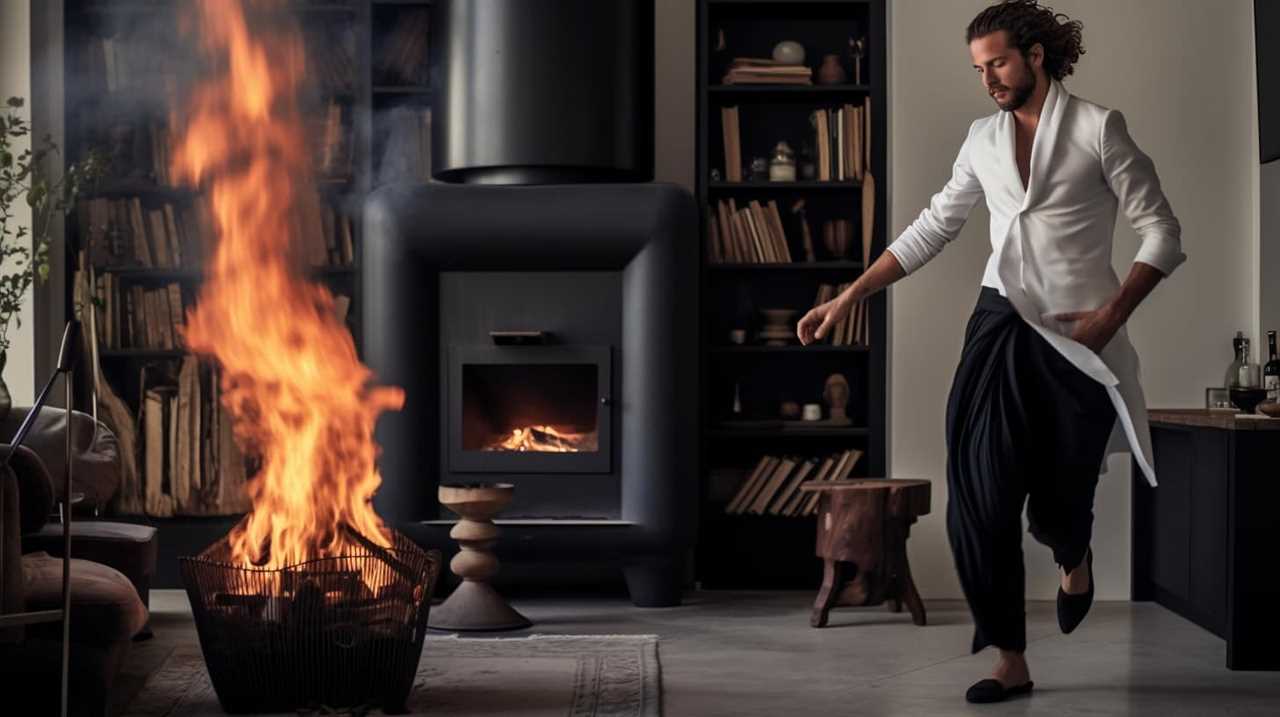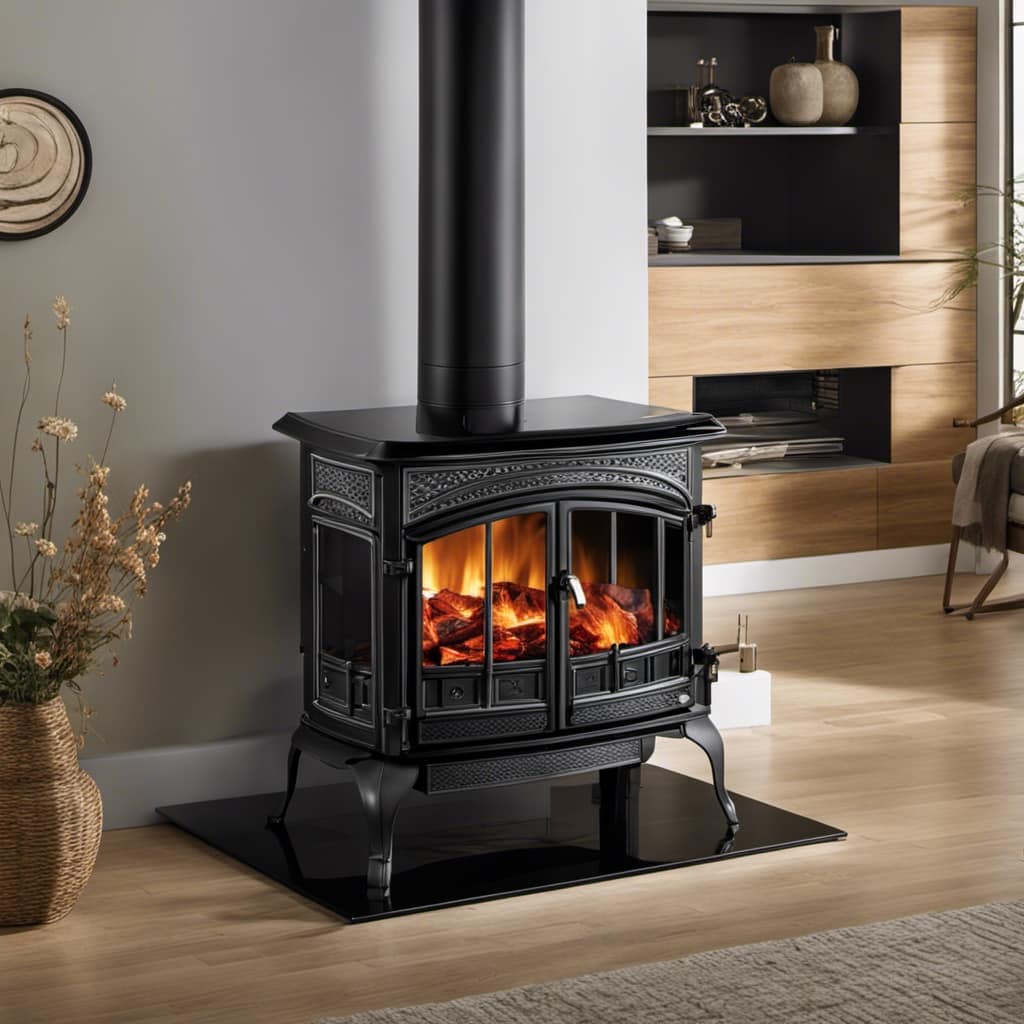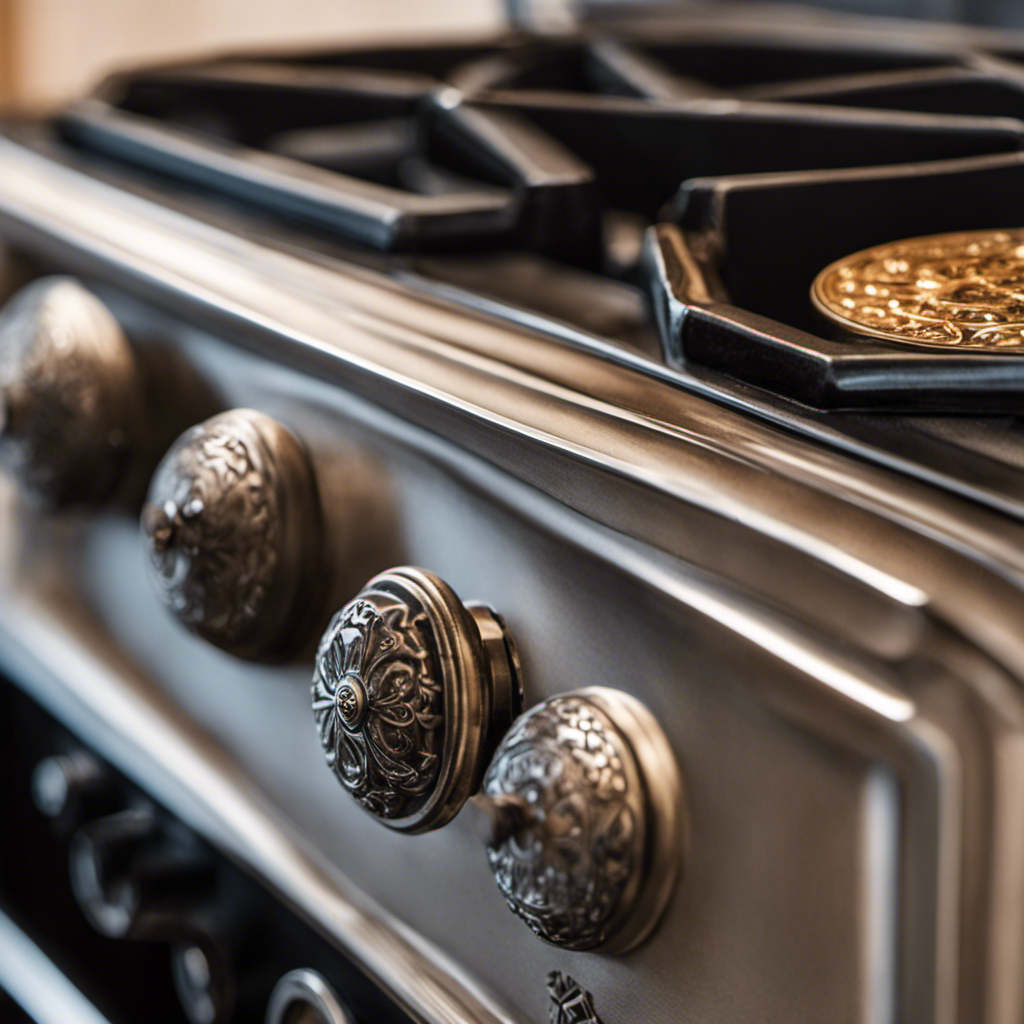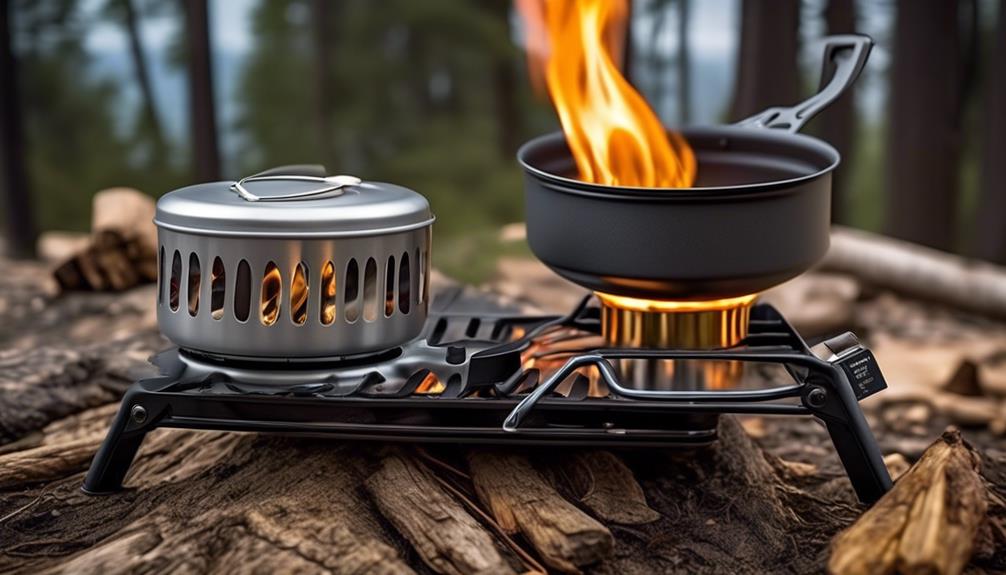
As a wood stove enthusiast, I’ve encountered the strong smell that is produced when the fire burns too intensely. However, there are methods to control this bold aroma.
In this article, we’ll delve into the common causes of strong odors from wood stoves, explore the impact of high temperatures, and provide valuable tips for proper ventilation and fuel selection.
By the end, you’ll be equipped with the knowledge to minimize those overpowering smells and enjoy a more pleasant wood stove experience.
Key Takeaways
- Burning wood at excessively high temperatures intensifies the smell
- Poor combustion, inadequate ventilation, and low-quality firewood contribute to strong odors
- Regular cleaning and maintenance ensure proper airflow and combustion
- Strong wood stove smell can indicate harmful pollutants in the air, such as carbon monoxide
Common Causes of Strong Odor From a Wood Stove
I’ve noticed that a common cause of a strong odor from my wood stove is when I burn wet or unseasoned wood. Understanding combustion is crucial in troubleshooting techniques for minimizing odor.

When wood burns, it undergoes a process called combustion, which is the chemical reaction between wood and oxygen. Inefficient combustion occurs when the wood isn’t properly dried or seasoned. Wet or unseasoned wood contains a higher moisture content, leading to incomplete combustion. As a result, the wood stove doesn’t reach its optimum temperature, causing smoldering and the release of unpleasant odors.
To prevent this, it’s essential to use properly seasoned wood with a moisture content of around 20%. By doing so, you can ensure efficient combustion, minimize odors, and enjoy a clean and efficient wood stove experience.
Understanding the Impact of High Temperatures on Wood Stove Smell
Burning wood at excessively high temperatures can intensify the wood stove smell, potentially leading to an overpowering and unpleasant odor. This can happen for a number of reasons, including poor combustion, inadequate ventilation, or using low-quality firewood. Understanding the impact of high temperatures on wood stove smell is crucial for maintaining a comfortable and safe indoor environment.
Here are three key points to consider:

-
Safety precautions for wood stove use in high temperatures: It’s important to regularly clean and maintain your wood stove to ensure proper airflow and combustion. Additionally, using seasoned firewood that has been properly dried can help prevent excessive smoke and odor.
-
The effects of a strong wood stove smell on indoor air quality: A strong wood stove smell can indicate the presence of harmful pollutants in the air, such as carbon monoxide. This can have adverse effects on indoor air quality and pose a risk to your health. It’s essential to address any strong odors promptly and take steps to improve ventilation and air circulation.
-
Proper stove operation: Operating your wood stove within its recommended temperature range can help prevent the smell from becoming overwhelming. Avoid burning wood at excessively high temperatures, as this can lead to incomplete combustion and the release of more volatile organic compounds, which contribute to the odor. Following manufacturer guidelines and using a thermometer can help you maintain optimal operating temperatures.
Tips for Proper Ventilation to Reduce Strong Odors
Having good airflow is essential for reducing strong odors, so I make sure to open windows and use fans to properly ventilate my home when dealing with unpleasant smells. Ventilation techniques play a crucial role in odor reduction strategies, as they help to remove the stagnant air and replace it with fresh air from the outside. Opening windows allows for natural ventilation, while fans help to circulate the air more efficiently. It’s important to consider the placement of fans to ensure that the airflow is directed towards the source of the odor.

Additionally, choosing the right wood and fuel for odor control is equally important. By opting for seasoned wood and avoiding certain types of fuel, such as wet or green wood, the chances of strong odors occurring are significantly reduced. Transitioning into the subsequent section about choosing the right wood and fuel for odor control, let’s explore some effective options.
Choosing the Right Wood and Fuel for Odor Control
To prevent strong odors, I always opt for properly seasoned wood and avoid using wet or green fuel. Fuel selection plays a crucial role in controlling the odor produced by a wood stove. Here are three important factors to consider:
-
Moisture content: Using properly seasoned wood with a moisture content of around 20% or less helps minimize odors. Seasoned wood burns more efficiently and produces less smoke and odor compared to wet or green fuel.
-
Type of wood: Different types of wood have varying levels of natural oils and resins, which can affect the smell when burned. Hardwoods like oak, maple, and birch tend to have a milder aroma compared to softwoods like pine or cedar.

-
Wood storage: Properly storing wood in a dry, well-ventilated area ensures that it remains dry and free from mold or mildew. This helps maintain the quality of the wood and reduces the chances of it producing strong odors when burned.
By following these fuel selection techniques, you can significantly reduce the strong smells emitted by your wood stove.
Now, let’s explore maintenance and cleaning techniques to further minimize these odors.
Maintenance and Cleaning Techniques to Minimize Strong Smells
While regularly scrubbing the stove’s interior, I’ve noticed that using a vinegar and water solution helps eliminate strong smells. Cleaning frequency plays a crucial role in minimizing odors emitted by wood stoves. It’s recommended to clean the stove at least once a month, or more frequently if it’s used daily.

A thorough cleaning involves not only the interior but also the exterior surfaces, flue pipe, and chimney. To prevent strong smells, it’s essential to practice proper maintenance techniques. This includes using seasoned firewood, avoiding burning wet or resinous wood, and ensuring proper combustion by adjusting air vents.
Additionally, regular inspection of the stove’s gaskets, seals, and flue system is necessary to prevent any leaks that could contribute to unpleasant odors. By following these odor prevention techniques and maintaining a regular cleaning schedule, strong smells can be effectively minimized.
Conclusion
In conclusion, if you want your wood stove to emit a strong smell when burning too hot, you’re in luck! By following the tips and techniques mentioned in this article, you can ensure that your wood stove produces a powerful and overwhelming odor that will surely leave an impression.
Remember, proper ventilation, the right choice of wood and fuel, and regular maintenance are key to achieving this aromatic experience.

Happy burning!
Growing up surrounded by the vast beauty of nature, Sierra was always drawn to the call of the wild. While others sought the comfort of the familiar, she ventured out, embracing the unpredictable and finding stories in the heartbeat of nature.
At the epicenter of every remarkable venture lies a dynamic team—a fusion of diverse talents, visions, and passions. The essence of Best Small Wood Stoves is crafted and refined by such a trio: Sierra, Logan, and Terra. Their collective expertise has transformed the platform into a leading authority on small wood stoves, radiating warmth and knowledge in equal measure.










